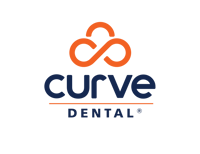Dental Eruption Chart: A Clinical Tool for Smarter Diagnosis and Family-Centered Care

In pediatric dentistry—and in any practice that sees children or teens—the dental eruption chart is more than a visual aid. It’s a critical diagnostic and planning tool that informs everything from preventive care to orthodontic referrals to long-term restorative strategy.
For seasoned dental professionals, eruption timelines are second nature. But the reality is that families often have questions, variations are common, and aligning clinical findings with developmental expectations is essential to building trust and delivering proactive care.
In this guide, we’ll explore:
-
The purpose and value of a dental eruption chart in clinical practice
-
Primary vs. permanent tooth eruption timelines
-
Common deviations and what they can signal
-
How to use eruption data to guide early interventions
-
How Curve Dental® helps you document and track eruption status across patient records
What Is a Dental Eruption Chart?
A dental eruption chart outlines the typical timeline and sequence in which teeth emerge through the gums, both for primary (baby) teeth and permanent (adult) teeth. These charts are commonly used:
-
As an educational resource for parents
-
To track developmental progress
-
As a diagnostic reference during exams
-
To flag delayed or premature eruption
-
To guide referrals to ortho, oral surgery, or pediatric specialists
While most general timelines are standardized, eruption varies widely between individuals. That’s why documentation matters—and why a system that allows easy annotation and progress tracking can improve clinical care.
Primary Tooth Eruption Timeline (Deciduous Teeth)
Primary teeth typically begin to erupt around 6 months of age and are usually all present by age 3. There are 20 primary teeth in total.
| Tooth | Eruption Age (months) |
| Central incisors | 6–10 (lower), 8–12 (upper) |
| Lateral incisors | 10–16 |
| First molars | 13–19 |
| Canines (cuspids) | 16–23 |
| Second molars | 23–33 |
Primary teeth typically erupt in a symmetrical pattern, starting with the lower central incisors. Any significant asymmetry or delay—especially in conjunction with other developmental concerns—may warrant further evaluation.
Permanent Tooth Eruption Timeline
Permanent teeth begin to emerge around age 6 and continue into the late teens—especially with third molars. There are 32 permanent teeth.
| Tooth | Eruption Age (years) |
| First molars | 6–7 |
| Central incisors | 6–8 |
| Lateral incisors | 7–9 |
| Canines | 9–12 |
| First premolars | 10–11 |
| Second premolars | 10–12 |
| Second molars | 11–13 |
| Third molars (wisdom teeth) | 17–21 |
Permanent teeth erupt in a general anterior-to-posterior pattern, but timing can vary widely. A solid eruption chart is key to recognizing what’s “normal” and what might need attention.
When Eruption Deviates from the Chart
As every experienced dentist knows, eruption charts represent averages—not rules. Still, there are patterns that should raise red flags:
🚩 Delayed Eruption
Could signal:
-
Supernumerary teeth
-
Endocrine disorders (e.g., hypothyroidism)
-
Impacted or blocked teeth
-
Premature loss of adjacent primary teeth
🚩 Premature Eruption
May be linked to:
-
Neonatal or natal teeth
-
Localized trauma or infection
🚩 Ectopic Eruption or Asymmetry
Might indicate:
-
Crowding or lack of space
-
Early ortho intervention need
-
Retained primary teeth
Curve’s charting tools—built right into its comprehensive practice management platform—allow providers to document eruption anomalies in real time and track trends across visits. This is particularly useful in family practices or long-term pediatric care.
Using Eruption Charts to Drive Patient Education and Treatment Planning
Parents often ask questions like:
-
“Is it normal that my child still hasn’t lost a baby tooth?”
-
“Should we be worried about that tooth growing in behind the baby one?”
-
“Do braces need to wait until all the adult teeth come in?”
Being able to show them an eruption chart side-by-side with their child’s intraoral image or charted progress can build confidence and increase case acceptance for preventive ortho, space maintainers, or even sealants and fluoride treatments.
Curve Dental makes this easier by integrating charting with imaging and treatment planning. Whether you’re in hygiene or a doctor op, the patient’s eruption status, clinical notes, and images are just a click away.
Best Practices for Tracking Tooth Eruption in a Modern Practice
-
Document eruption status at each recall. Note missing, delayed, or atypically positioned teeth as they appear.
-
Use integrated charting and imaging. Combine panoramic scans, bitewings, and intraoral photos with visual charting tools for better tracking and communication.
-
Engage parents using visual references. Curve’s treatment planning visuals and charting color codes help make timelines and procedures easier to explain.
-
Track across siblings. Practices using Curve’s family file features can see sibling timelines side-by-side, making it easier to set expectations.
-
Flag deviations for ortho or pedo follow-up. Add notes or alerts tied to the chart that notify the front desk when a patient may need a specialist referral.
How Curve Supports Smarter Developmental Monitoring
Curve Dental isn't just a practice management platform—it's a clinical tool built with the real-world needs of dentists in mind.
With Curve, you can:
-
Chart eruption anomalies alongside treatment notes and x-rays
-
Access patient histories from any device—great for weekend consults or multiple provider practices
-
Use growth timeline data to guide conversations and patient retention strategies
-
Coordinate ortho and pedo referrals more effectively with complete clinical context
Final Word: A Small Chart with Big Clinical Power
The dental eruption chart might seem like a basic tool—but in the hands of a skilled provider, it can support better diagnosis, earlier interventions, and clearer communication with families.
Whether you’re helping a parent understand their child’s development or coordinating with ortho for interceptive treatment, having a modern system that tracks, visualizes, and documents eruption patterns matters.
Curve Dental helps you do exactly that—with streamlined, cloud-based tools that let you spend less time searching for data and more time delivering great care.
→ Want to see how Curve enhances clinical workflows for family and pediatric care? Book a demo today.
*This content was partially generated by artificial intelligence. It may contain errors or inaccuracies, and should not be relied upon as a substitute for professional advice.

Curve Dental
Welcome to the official blog of Curve Dental. Serving up content about the team behind Curve Dental
